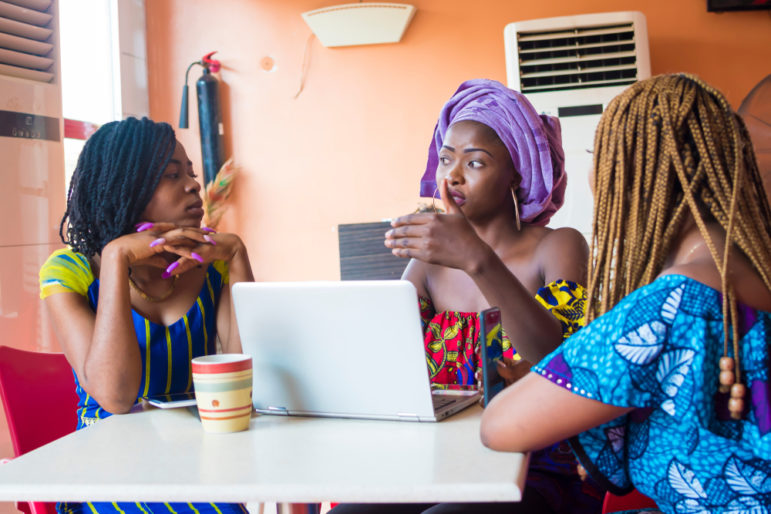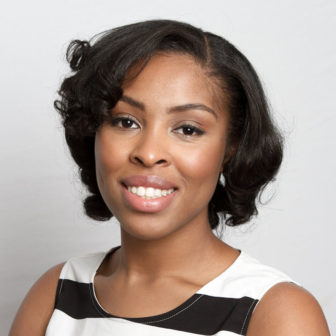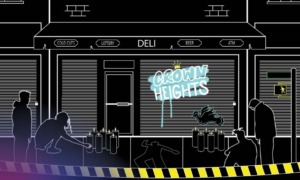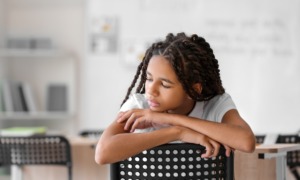
i_am_zews/Shutterstock
.
Communities of color continue to be disproportionately impacted by gun violence across the United States. Unfortunately, communities that are most impacted by gun violence are often plagued by structural inequities that perpetuate this violence. That is why when we look to address gun violence, we must have a holistic conversation to ensure that those most impacted are being centered in this conversation and moved from the margins.

Lauren Footman
To have a holistic conversation, we must address root causes (such as poverty, income inequality, underperforming schools and under-resourced public services) while also advocating for equitable resources for community-based programs and addressing easy access to firearms. Moreover, once we are clear on the solutions, we have to keep the most impacted communities at the forefront of this conversation. This work heavily relies on data and the data shows us who is most impacted, so we must be intentional to prioritize the most impacted communities in our work when setting policy and programmatic agendas.
When discussing data and trends of gun violence, we cannot help but notice the ages of the victims. Data shows us that black youth — both females and males — are disproportionately impacted by gun violence. Our analysis of CDC data states “Black boys and youths aged 0-19 were over 14 times more likely to be killed by firearm homicide than White (non-Latino) boys and youths, while Black men aged 20-34 were nearly 17 times more likely to be killed by firearm homicide than their White (non-Latino) counterparts. Black girls and youths aged 0-19 and Black women aged 20-34 were each nearly 6 times more likely to be killed by firearm homicide than their White (non-Latino) counterparts (5.92 and 5.63 times, respectively).”
This data is sobering, but when you hear these stories firsthand in community meetings you are hit with the harsh reality: There are too many young people who do not get to experience life’s milestones, and there are too many families and communities forever changed due to gun violence.
As we think of the stories of those most impacted by gun violence, we must not forget the humanity of the communities we are looking to amplify and support. A huge part of this space must be ensuring that we are not doing harm in our efforts to support communities.
This means that we are building authentic relationships with the communities, and that they are recognized as the experts of their communities and of this work, as often they have been organizing for years unrecognized and unsupported. Outside of building meaningful relationships, it is imperative that we work to position communities and individuals to get the structural support to do violence prevention work, as so much of this work can be volunteer.
In addition, this work entails facilitating intentional relationships to have their work become sustainable, but also making sure state and national organizations are reflective of those most impacted. The only way we can continue to build a robust holistic movement is ensuring this movement is hiring members of the communities that are most impacted.
Gun violence is a multifaceted challenge that demands a holistic set of solutions to stop the cycles of daily gun violence in the most impacted communities. Those who are closest to the pain need to be closest to the power.
At The Educational Fund to Stop Gun Violence, we recognize that we must engage impacted communities — specifically communities of color — in our work to reduce gun deaths. We do this by first building genuine relationships with community members. We then use a research-grounded toolkit called Education to Action to turn these relationships into self-sustaining Community Action Networks that advocate for policies to reduce gun violence.
The Community Action Networks are self-sustaining advocacy groups from communities statewide. They advance an evidence-based, holistic approach to tackle gun violence in communities of color by hosting workshops and events that bring together law enforcement, community members, faith leaders and politicians.
They create a space for individuals who were disengaged from the political process to become active leaders within their communities, fighting for policies that will build healthy communities free of violence and inequity. They also act as a forum for skill-building, for instance in public relations and communications, and provide an opportunity for members to collaborate on the development of violence prevention programming.
Lauren Footman is a community engagement coordinator at The Educational Fund to Stop Gun Violence. She has been working in the violence prevention movement for seven years at the intersection of communities and policy.































